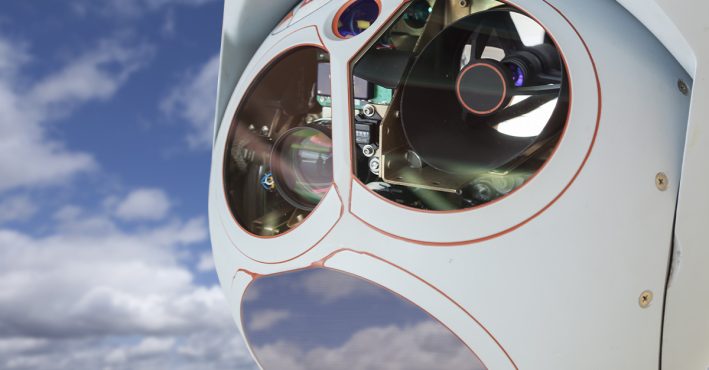
In the world of embedded systems, where real-time operations are paramount, the Sensor Open Systems Architecture (SOSA™) Consortium has been making significant strides in standardizing interfaces and architectures for sensor systems. One key development in this domain is the adoption of container technology, which is revolutionizing how sensor systems are developed, deployed, and maintained.

DornerWorks embedded engineer Taylor Prins has been at the forefront of this movement, working with the SOSA software working group to shape the software specification to work seamlessly with container technology.
Containers, in the context of software development, are lightweight, portable, and self-sufficient units that package code and its dependencies. They provide an isolated environment where applications can run without interference from the underlying system.
In sensor systems, isolation and determinism are essential to ensure reliable and predictable performance. Containers create an encapsulated environment, separating the application from the host operating system, libraries, and other applications. This isolation guarantees that sensor applications operate independently and consistently, minimizing the potential for interference or conflicts that could compromise functionality.
Sensor systems often have diverse hardware and software configurations. Developing applications that run seamlessly on various platforms can be challenging. Containers abstract the application from the underlying hardware and provide a consistent environment, ensuring portability across different target systems. SOSA aligned containers and aligned runtime environments will facilitate integration on sensor systems.
In resource-constrained embedded systems, efficient utilization of computing resources is vital. Traditional virtualization methods come with overhead costs, making them less suitable for real-time sensor applications. Containers, being lightweight, consume fewer resources than a traditional virtual environment, enabling more efficient utilization of CPU cycles and memory. This efficiency is especially crucial in embedded sensor systems, where resources must be optimized to meet low-size, weight and power (SWaP) requirements.
The SOSA software working group comprises organizations with a vested interest in advancing sensor technology. Prins collaborated with other industry experts to align the software specification with container usage. This collaboration ensured that the standard would be robust, versatile, and compatible with the diverse needs of the SOSA ecosystem.
Containers inherently promote a modular approach to application design. By working with the SOSA software working group to integrate containers into the architecture, Prins facilitated the development of sensor systems that embrace open standards and modular design principles. This modularity allows for easier integration of software components and fosters innovation in the sensor technology domain.
Prins’ efforts and the adoption of containers within the SOSA ecosystem are set to expand the potential of sensor technology in various ways.
Containers accelerate the software development process by enabling developers to package applications with all their dependencies. This eliminates the need for manual setup and configuration, reducing development time and potential errors. As a result, sensor systems aligned with SOSA can be brought to market more quickly, enabling faster adoption of cutting-edge technology.
Maintaining sensor systems in the field can be challenging, especially when dealing with different hardware and software configurations. This is one of the main reasons the U.S. Armed Forces have been pushing for the Modular Open Systems Approach (MOSA). Containers offer a consistent environment for applications, making updates and maintenance more straightforward and reliable. With containerization, updates can be deployed with confidence, knowing that the application’s behavior will remain consistent regardless of the target system.
Security is a top priority in sensor systems, particularly when they are deployed in critical infrastructure and defense applications. Containers provide isolation and sandboxing, limiting the impact of security breaches.
As sensor technology advances and applications become more complex, the need for scalable and flexible solutions grows. Containers, by design, are scalable and easily adaptable to changing requirements. This flexibility enables sensor systems to evolve and incorporate new functionalities seamlessly.
The adoption of container technology in real-time operating environments, particularly in the context of sensor systems aligned with the SOSA Consortium, holds immense value for the embedded systems industry. From improving development cycles and system maintainability to enhancing security and scalability, containers are poised to transform sensor technology and drive innovation in the field. As the industry embraces this technology, we can expect to see even more advanced and sophisticated sensor systems, unlocking new possibilities in critical applications across various sectors.
Schedule a meeting with DornerWorks to turn your sensor network ideas into reality.